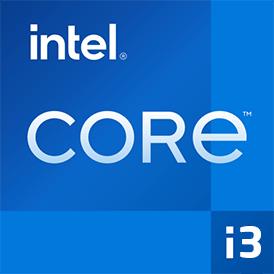 Geekbench 3, 64bit (Multi-Core)
Geekbench 3, 64bit (Multi-Core)
|
|
Intel Core i3-4130T
2C 4T @ 2.9 GHz
|
5672
|
|
|
Intel Celeron G1850
2C 2T @ 2.9 GHz
|
4546
|
 Estimated results for PassMark CPU Mark
Estimated results for PassMark CPU Mark
|
|
Intel Core i3-4130T
2C 4T @ 2.9 GHz
|
2885
|
|
|
Intel Celeron G1850
2C 2T @ 2.9 GHz
|
1900
|
 Geekbench 3, 64bit (Single-Core)
Geekbench 3, 64bit (Single-Core)
|
|
Intel Core i3-4130T
2C 4T @ 2.9 GHz
|
2714
|
|
|
Intel Celeron G1850
2C 2T @ 2.9 GHz
|
2597
|
 Geekbench 6 (Multi-Core)
Geekbench 6 (Multi-Core)
|
|
Intel Core i3-4130T
2C 4T @ 2.9 GHz
|
1859
|
|
|
Intel Celeron G1850
2C 2T @ 2.9 GHz
|
920
|
 Geekbench 5, 64bit (Multi-Core)
Geekbench 5, 64bit (Multi-Core)
|
|
Intel Core i3-4130T
2C 4T @ 2.9 GHz
|
1541
|
|
|
Intel Celeron G1850
2C 2T @ 2.9 GHz
|
1307
|
 Geekbench 6 (Single-Core)
Geekbench 6 (Single-Core)
|
|
Intel Core i3-4130T
2C 4T @ 2.9 GHz
|
916
|
|
|
Intel Celeron G1850
2C 2T @ 2.9 GHz
|
532
|
 Geekbench 5, 64bit (Single-Core)
Geekbench 5, 64bit (Single-Core)
|
|
Intel Core i3-4130T
2C 4T @ 2.9 GHz
|
707
|
|
|
Intel Celeron G1850
2C 2T @ 2.9 GHz
|
607
|
 Cinebench R15 (Multi-Core)
Cinebench R15 (Multi-Core)
|
|
Intel Core i3-4130T
2C 4T @ 2.9 GHz
|
285
|
|
|
Intel Celeron G1850
2C 2T @ 2.9 GHz
|
205
|
 iGPU - FP32 Performance (Single-precision GFLOPS)
iGPU - FP32 Performance (Single-precision GFLOPS)
|
|
Intel Celeron G1850
2C 2T @ 2.9 GHz
|
168
|
 Cinebench R15 (Single-Core)
Cinebench R15 (Single-Core)
|
|
Intel Celeron G1850
2C 2T @ 2.9 GHz
|
110
|
|
|
Intel Core i3-4130T
2C 4T @ 2.9 GHz
|
109
|
 Cinebench R11.5, 64bit (iGPU, OpenGL)
Cinebench R11.5, 64bit (iGPU, OpenGL)
|
|
Intel Core i3-4130T
2C 4T @ 2.9 GHz
|
16.6
|
|
|
Intel Celeron G1850
2C 2T @ 2.9 GHz
|
16.1
|
 Cinebench R11.5, 64bit (Multi-Core)
Cinebench R11.5, 64bit (Multi-Core)
|
|
Intel Core i3-4130T
2C 4T @ 2.9 GHz
|
3.2
|
|
|
Intel Celeron G1850
2C 2T @ 2.9 GHz
|
2.5
|
 Cinebench R11.5, 64bit (Single-Core)
Cinebench R11.5, 64bit (Single-Core)
|
|
Intel Celeron G1850
2C 2T @ 2.9 GHz
|
1.3
|
|
|
Intel Core i3-4130T
2C 4T @ 2.9 GHz
|
1.2
|

